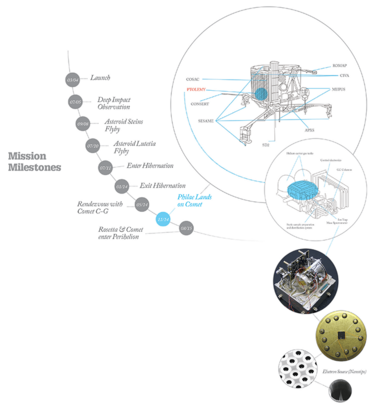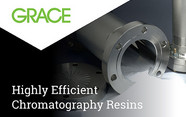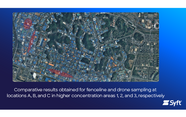The Comet Lander
Performing GC-MS on a speeding comet certainly sounds like science fiction...
“The greatest satisfaction will be the return of some valid electromagnetic signals that ultimately have the capacity to convey some new scientific meaning and knowledge,” Ian Wright told us back in January 2014 when comet chaser Rosetta awoke from hibernation and phoned home from some 500 million miles away (click here).
Despite a harpoon system failure and the lack of downwards thruster, Philae – Rosetta’s comet lander – finally came to a safe but shadowy resting place, having bounced twice after the initial touchdown.
Wright sent an email in the midst of the exciting activity: “We are, as of 16:56 UTC on the November 14, waiting to find out whether some newly configured telecommands can be uploaded tonight for what might be a last attempt at making some measurements. We already have plenty of data in the bag but are hungry for more.”
In fact, in a little over two hours of communication time, the Philae was able to send all of its science data from the targeted instruments, including Ptolemy, the “miniaturized” gas chromatography-mass spectrometry system developed by Wright. Given the lack of solar power available, Philae’s power supply faded rapidly...
What next for lonely Philae? “We still hope that at a later stage of the mission, perhaps when we are nearer to the Sun, that we might have enough solar illumination to wake up the lander and re-establish communication, ” said Stephan Ulamec, lander manager at the DLR German Aerospace Agency.
We look forward to sharing results that are out of this world in the near future.
For more information on Rosetta Mission click here


Rich Whitworth completed his studies in medical biochemistry at the University of Leicester, UK, in 1998. To cut a long story short, he escaped to Tokyo to spend five years working for the largest English language publisher in Japan. "Carving out a career in the megalopolis that is Tokyo changed my outlook forever. When seeing life through such a kaleidoscopic lens, it's hard not to get truly caught up in the moment." On returning to the UK, after a few false starts with grey, corporate publishers, Rich was snapped up by Texere Publishing, where he spearheaded the editorial development of The Analytical Scientist. "I feel honored to be part of the close-knit team that forged The Analytical Scientist – we've created a very fresh and forward-thinking publication." Rich is now also Content Director of Texere Publishing, the company behind The Analytical Scientist.

















